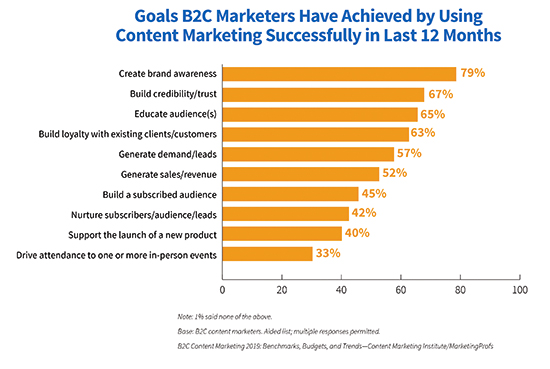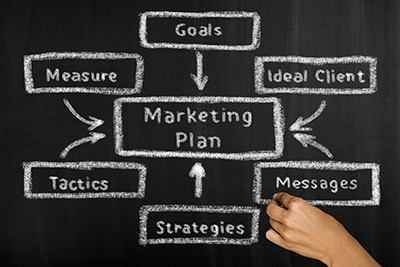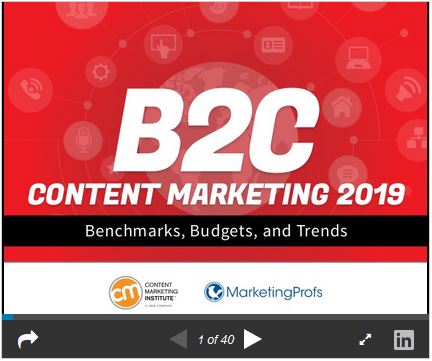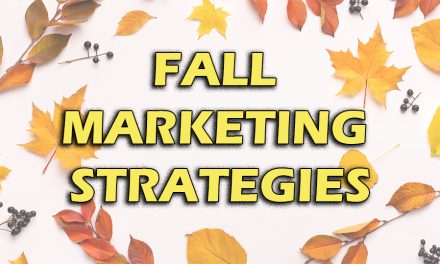
Think you don’t need content marketing? Think it’s too expensive and there is no return on investment? Don’t even know what it is? Think again!
At its heart, content marketing is about teaching ‘ sharing your expertise. It’s about educating your prospects and customers about how you can solve their problems. Sometimes they don’t even know they have a problem! You’re the perfect person to teach them why they might need something your company offers.
Content marketing is not advertising. And it isn’t just something you ‘do’ sporadically. It is a long-term strategy where you use valuable, relevant content to build relationships with people so that if/when they do have a buying need (or someone else they know does) they will think of your company.

Done right, content marketing can:
- Build awareness of your company ‘ drives people to your website to learn more
- Generate leads
- Result in sales, repeat business, word-of-mouth referrals, and customers for life.
According to Content Marketing Institute’s (CMI) B2C Content Marketing 2019’Benchmarks, Budgets, and Trends (ncilink.com/CMIStudy), 79% of companies who have been using content marketing for at least one year say it has successfully enabled them to create brand awareness. Slightly more than half (52%) say it has generated sales/revenue.
If you think content marketing isn’t for contractors, think again. One of my favorite examples is Marcus Sheridan (also known as The Sales Lion), now a highly sought-after international speaker and author of the content marketing book, They Ask, You Answer.
According to Marcus’ website (marcussheridan.com/):
‘Marcus’ story didn’t begin on the stage. It started with a business created and run out of the back of a beat-up pickup truck. Marcus’ experience of saving his company, River Pools and Spas, from the economic collapse of 2008 has been featured in multiple books, publications, and university case studies. From its humble beginnings as a three-man firm to one of the largest manufacturers and installers in the country, River Pools and Spas has the most visited pool website in the world, with over 750,000 hits a month.?
How did he save his company all those years ago? He began by sincerely answering questions about pools ‘ and the rest is history! Marcus wasn’t focused on promoting his products and services ‘ he was focused on helping people by educating them about pools and spas!
As High-Performance HVAC contractors, don’t you want to do the same thing for your business?
HOW TO GET STARTED
In a nutshell, here are the steps involved with content marketing:
Assess your current branding, messaging, and existing ‘content assets? (website, social media sites, blog, e-newsletter, videos, case studies, etc.).
Clearly define your existing audience and describe them in written ‘buyer personas.’ Who are they? What are their pain points? What motivates them? What expertise of yours do they seek? Where are they in the ‘buyer’s journey? ‘ are they just trying to learn, or are they ready to buy?
Also, think about any potential audiences you want to attract. Where do those audiences congregate online? How can you get your content in front of them?

Develop a written content marketing strategy. This doesn’t have to be overly complicated or written in stone. It will serve as your guiding document, but it can be flexible, so you can change it as your goals change and/or you learn what’s working and what isn’t.
Focus on the initiatives listed in your content marketing strategy ‘ do you need to make sure to optimize your website content? Do you need to develop new, informative blog posts (or even get your blog up and running)? What about
Do you want to create and regularly send out an e-newsletter? Or maybe you want to increase your presence on Facebook, YouTube, or another social media platform.
Develop an editorial and/or social media calendar. Identify the topics you want to talk about throughout the year. You can align them to the seasons, holidays, news events, etc. It can be difficult and/or too time-consuming to manage multiple social media platforms successfully, so pick one or two on which to focus your efforts.
Create, distribute, and measure the content. Your content marketing strategy should define the types of content you want to create over the next 12 months, why, and how.

Your plan might look like this:
- We are going to create four, three-minute videos this year and release them on March 1, June 1, September 1, and December 1. The first one will be about A, the second one about B, the third one about C, and the fourth one about D.
- The intended audience for these videos is our Buyer Persona ‘Eddie.’ Eddie is someone who feels uncomfortable with the temperature and air quality in his home. He is at the ‘top of the buyer’s funnel,’ meaning he’s just exploring his problem.
- To drive viewers to these videos, we will promote them by 1) writing about them in a blog post, 2) mentioning them in our monthly e-newsletter, 3) talking about them at the upcoming local Home Expo Event, where we exhibit, and 4) posting them on Facebook.
- Our goal for the videos is to create brand awareness and educate prospects. We want to generate at least 50 views on each video within one year, drive at least 20% of those to our website for more information, and convert at least 10% into email subscribers (i.e., get at least 10% to sign up for our e-newsletter).
Or this:
- We are going to have someone write an ebook for us this year to post on our website. The ebook will be titled, ‘10 Ways To Improve the Comfort in Your Home TODAY.’ The intended audience is Buyer Persona ‘Sharon,’ who is ‘further down the buying funnel,’ actively researching options to solve her problem.
- Among the several ways we plan to drive personas like Sharon to our website to access this educational content, we will include a call-to-action in our videos that says, ‘to learn more, visit www.OURWEBSITE.com.’
That URL will link to a landing page where the ebook is available. We will ask people for their email address to download the informative ebook (this is also known as ‘creating a gated content asset and putting it behind a registration form in order to collect leads?).
- Our goal is to generate at least 100 downloads/email addresses in 12 months via this initiative and eventually convert 10% into sales.
Note how both examples above are strategic. The contractor knows his or her goals and has clear directions for how to start achieving them. They also have an idea of how we want to measure success.
Remember, you can always tweak/improve the strategy as we go.
Other Strategies
While these examples are content-specific, you might have other goals, such as:
- Hiring someone to ensure we use the right search engine optimization (SEO) words on our website and in our content.
When you properly optimize content, it shows higher in search results making it easier and faster to find. This is properly optimized content based on certain keywords and search terms your audience uses to find information. You can also pay for search engine marketing or SEM services, also known as pay-per-click, to get your content to appear higher up in search results.
- Making sure all content includes a specific call-to-action (e.g., to learn more, download our ebook on how to achieve comfort in your home today)
- Requiring the staff person or freelancer who writes our content to spend at least one day per quarter with our sales team, so he/she can further develop a realistic understanding of what prospects want and need.
- Delivering content consistently (on a regular basis) to keep our message top-of-mind.
- Grow the number of subscribers to our e-newsletter; get on a regular schedule of sending out our e-newsletter (perhaps once a month). Keep our content brief ‘ link to a few informative resources on our website and maybe those on our suppliers’ websites (in keeping with our goal of being helpful).
Don’t Get Overwhelmed

There are many areas of content marketing ‘ strategy, content development, distribution, management, and measurement. The main thing is to NOT become overwhelmed and/or think ‘it’s too expensive.’
You can start small and grow from there ‘ but you have to commit; it takes time to see results (estimates are that it can take up to 18 months to see results).
Depending on your budget, perhaps you can hire a recent marketing graduate to get your content marketing off the ground (content marketing needs a leader/project manager ‘ as I mentioned at the beginning of this article. It’s not something someone on your existing staff can just ‘do on occasion?).
If you have a bigger budget, you may consider retaining the services of a content marketing consultant or agency.
How Do We Measure All This?
‘Sounds good, but how do you measure all of this ‘ will we see a return on investment?’ you may be asking. Measuring success will depend on your unique goals for what you want to achieve and how well you execute ‘ an intelligent strategy, quality content, consistency, delivering the right content to the right people at the right time, your competition and market, how your staff treat customers, online reviews about your company (your reputation) ‘ all of these factors and more play a role.
You may find that a piece of content that took a lot of time and money to create ends up providing the most long-term value in terms of sales generated over time. You may find that what you thought customers would love is a flop. You might see something you didn’t expect to generate a lot of results ‘ say a cheap and simple giveaway over Facebook — explode to create 200 new Facebook followers.
There are many ways to measure content performance (including many technology tools), but you can keep it as simple as an Excel spreadsheet. If you’re looking for a basic primer on how to use something like Google Analytics, check out How to Use the Most Helpful Reports in Google Analytics (ncilink.com/GoogleReports).
CMI has many resources for beginner, intermediate, and advanced-level marketers. Check out one of them: What Is Content Marketing? (ncilink.com/WhatIsContentMktg) for more information.
There is an informative blog, white papers, ebooks, training, webinars, research reports, and our annual Content Marketing World (contentmarketingworld.com) event held every September in Cleveland.
At CMI, we’re passionate about content marketing because it works ‘ and we have hundreds of examples and stories at our website to prove it!
Lisa Beets is the research director at Content Marketing Institute (CMI). She has been with CMI since its inception in 2010. Lisa has edited six books about content marketing including the seminal titles Get Content, Get Customers by Joe Pulizzi and Newt Barret and Managing Content Marketing by Robert Rose and Joe Pulizzi. Lisa is a former managing editor of Contracting Business Magazine and has written extensively on the HVAC industry. Follow her on Twitter @LisaBeets.














Recent Comments